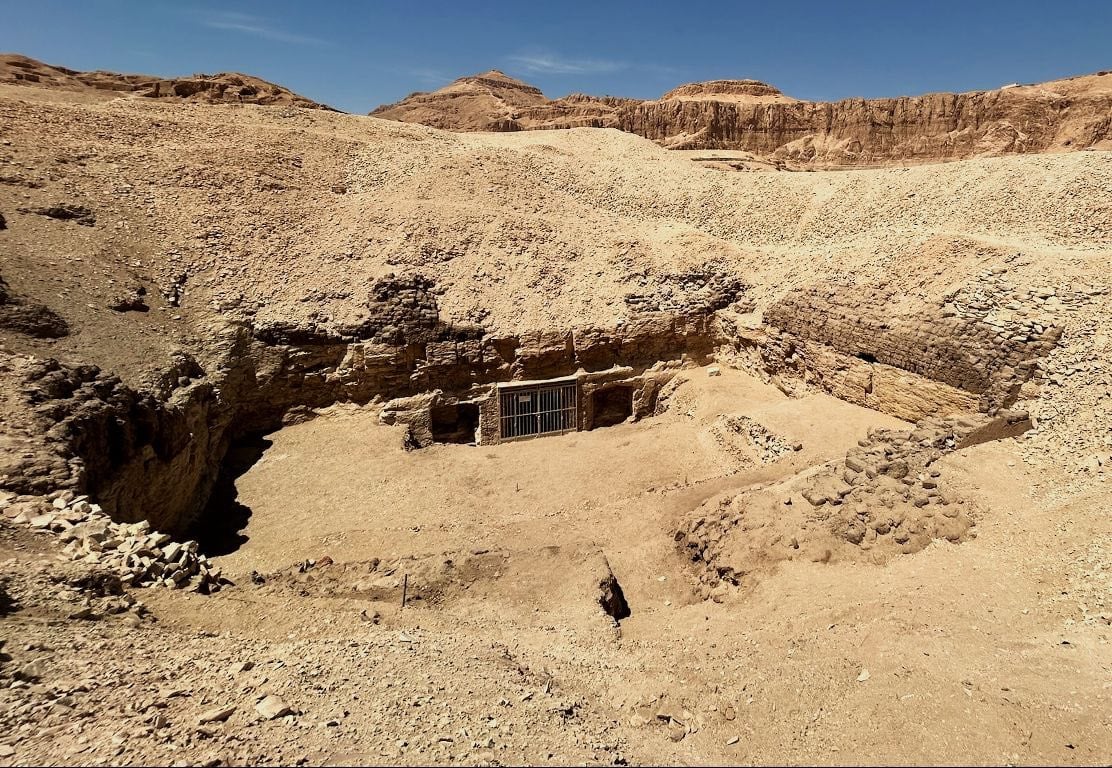

A joint Egyptian-Canadian archaeological team has identified the owner of ancient Theban Tomb, Kampp 23, located in the Al-Asasif area on the west bank of Luxor.
First discovered in the 1970s, the tomb has now been confirmed to belong to Amun-Mes, a high-ranking official who served as local governor of Thebes during Egypt’s Ramesside period.
The mission includes experts from Egypt’s Supreme Council of Antiquities and Ontario University. This marks the first time a team has conducted full-scale excavation work inside the tomb since its discovery.
Egyptian Minister of Tourism and Antiquities Sherif Fathy described the find as a major milestone in the ongoing collaboration between Egyptian and foreign archaeological teams.
He said the discovery reflects the strength of Egypt’s partnerships with international academic institutions and adds valuable insight into the lives of elite officials in ancient Egypt. Fathy also reaffirmed the government’s continued support for research that enhances Egypt’s role in global cultural tourism.

Dr. Mohamed Ismail Khaled, Secretary-General of the Supreme Council of Antiquities, noted that while the tomb had been known for decades, its owner and titles remained unknown until the recent excavation.
Researchers confirmed that Amun-Mes held several prestigious titles, including his role as Mayor of Thebes. Additional inscriptions found across Luxor’s west bank mention a person named Amun-Mes with titles such as “King’s Advisor,” “God’s Father of Amun,” “Tax Collector,” and “Head of Quarry Services” to Wadi Hammamat under Ramses IV.

However, Mohamed Abdel-Badei, Head of the Egyptian Antiquities Sector, said it is not yet certain whether all these titles refer to the same individual buried in Kampp 23 or another official with the same name.
Dr. Casey L. Kirkpatrick, who leads the Canadian team, said future excavation seasons aim to resolve questions about Amun-Mes’ full identity and career. She hoped continued analyses would offer a deeper understanding of his position in Theban society.
Abdel-Ghaffar Wagdy, head of the Egyptian group, reported signs that the tomb was reused in later periods. The team discovered colored plaster over limestone inscriptions, remains of a mixed-material entrance, and fragments of funerary objects, including ushabti figurines.

Architecturally, the ancient Luxor tomb is carved into rock and features a T-shaped layout typical of the Ramesside era. It includes a courtyard bordered by mudbrick walls, a large eastern pylon, and two entrance niches.
An interior corridor leads from the chapel to the burial chamber, which contains rock-cut statues in the transverse hall and sanctuary. The excavation team continues documenting the tomb’s features, hoping to uncover more about Amun-Mes’ life and legacy.
